Singapore Rail Test Centre officially opens, aims to bolster rail reliability
Prior to the development of the Singapore Rail Test Centre, there was a heavy reliance on testing new trains and rail systems overseas, says Senior Minister of State for Transport Amy Khor.
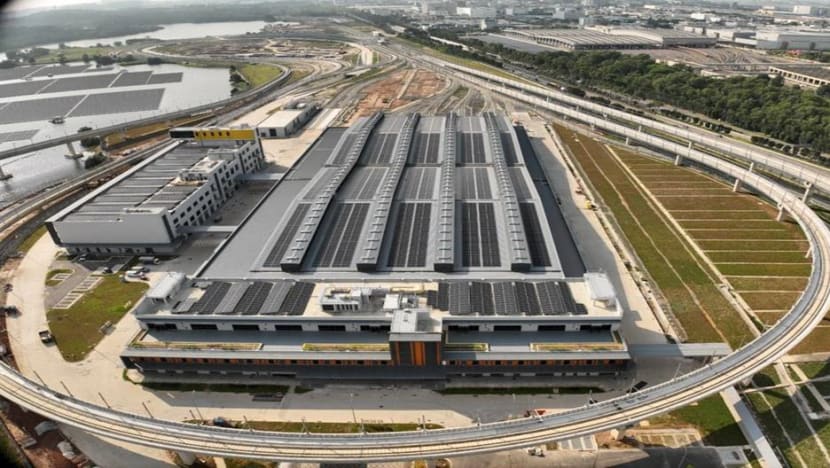
The Singapore Rail Test Centre was officially opened on Mar 28, 2025. (Photo: LTA)

This audio is generated by an AI tool.
SINGAPORE: An S-shaped track and sections of uphill rails are among the features of the Singapore Rail Test Centre (SRTC), which officially opened on Friday (Mar 28).
Located in Tuas, the facility is equipped to conduct "rigorous testing and commissioning of trains and core railways systems", and will support testing requirements for new and existing rail lines, said the Land Transport Authority (LTA) on Friday.
Prior to the development of SRTC, there was a heavy reliance on testing new trains and rail systems overseas before their deployment in Singapore, said Senior Minister of State for Transport Amy Khor during a speech at the opening ceremony on Friday.
“While these facilities have served us well, they have been unable to fully replicate our local operating conditions – for instance, just our weather alone is very different from that of our major vendors in Europe or China,” said Dr Khor.
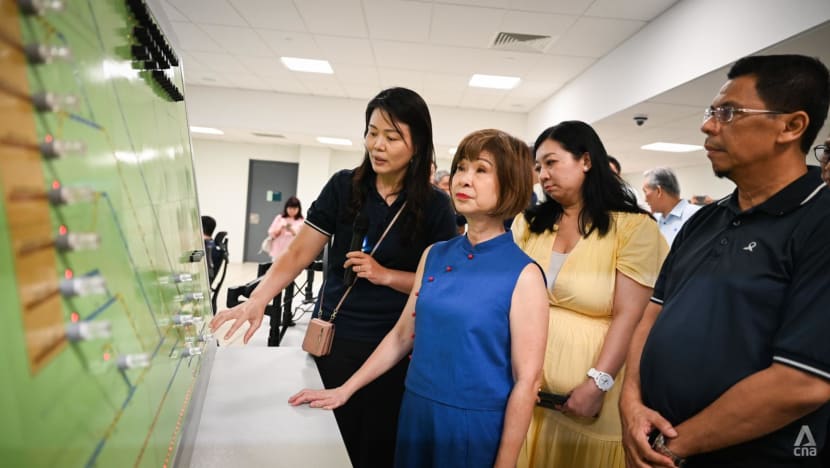
After these overseas tests, new trains still had to undergo extensive testing on operational lines in Singapore.
This took up "precious engineering hours". Every night there is only a short window of about three hours, from around 1am to 4am, for engineering work on the operational lines, putting pressure on rail engineers and technicians, she added.
“Today, with the completion of SRTC, Singapore now has our very own purpose-built testing facility that will help relieve pressures on our efforts to expand and maintain our rail network,” she said.
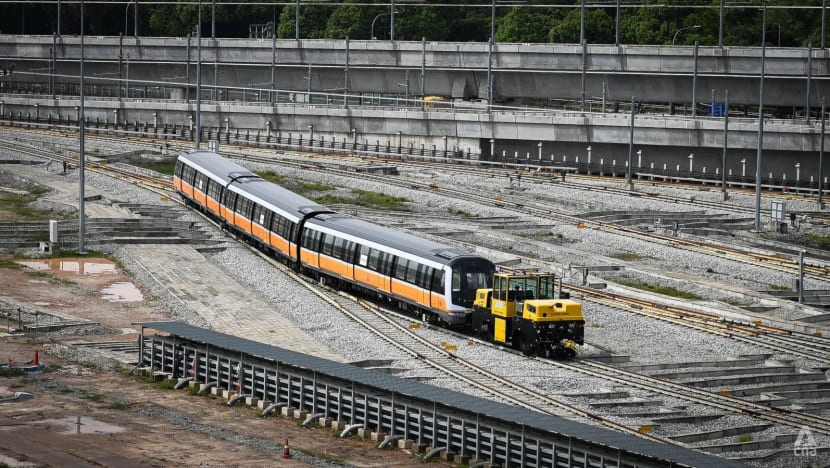
The two-phased project was first announced in 2019 by then-Transport Minister Khaw Boon Wan.
Construction for the S$800 million (US$597 million) facility – which occupies a site of 50 hectares – began in 2021 and was slated to be ready by 2024, but it was delayed a year.
Dr Khor added that the opening of SRTC comes at a “pivotal moment for our rail sector”.
“On top of ongoing rail expansion efforts, we shared our plans for new MRT lines, including the West Coast Extension, and feasibility studies into two potential new rail lines – the Seletar Line and Tengah Line,” she said.
She added that for the existing lines, the Ministry of Transport (MOT) has announced it intends to invest up to an additional S$1 billion over the next five years to ensure the rail network remains safe, reliable and resilient.
TESTING TRACKS
The SRTC features three specialised test tracks, said Dr Khor.
The first is a new 2.8km performance and integration track, with a section that is S-shaped.
The S-shaped track will test the train’s ability to travel successfully along a bend. The performance and integration track can also test if trains are well integrated with other rail systems.
There will also be a new 3km endurance track with an uphill gradient to test if trains remain durable after running for a specific mileage.
Part of the endurance track also features a viaduct that goes over Tengah Reservoir.
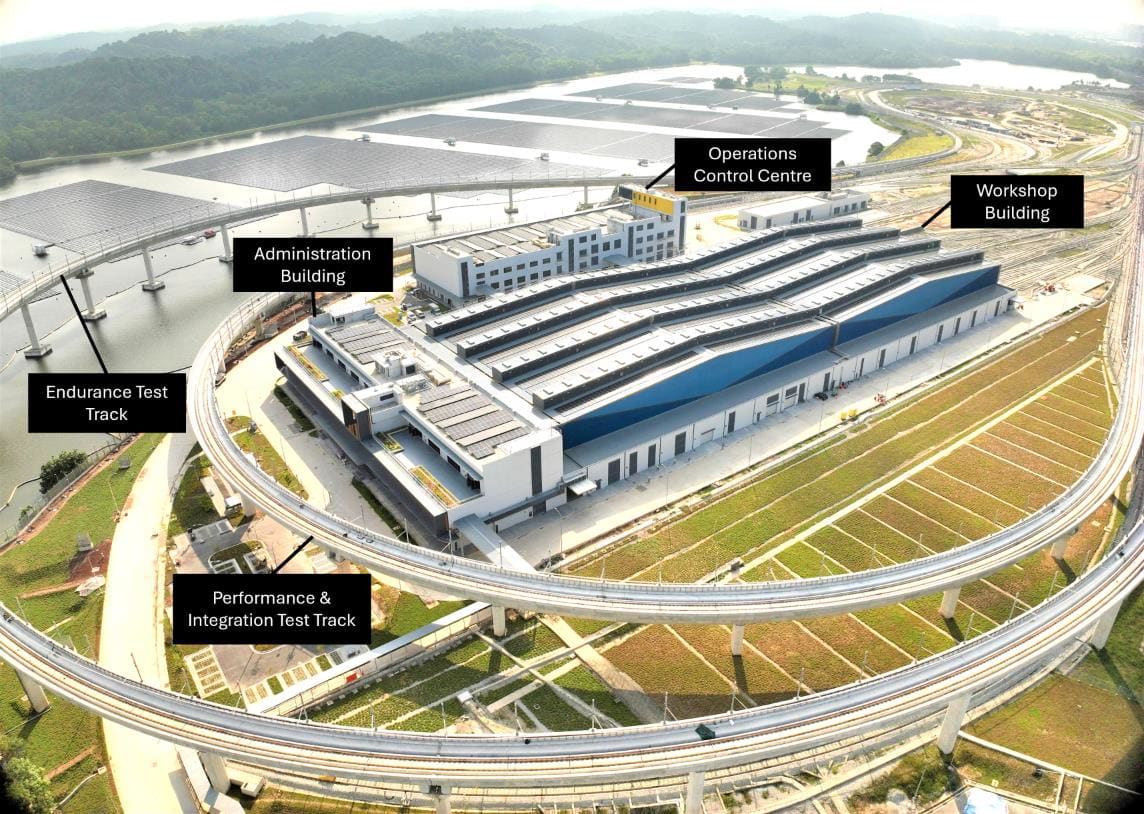
The third track is an existing 2.8km high-speed test track that allows trains to reach maximum speeds of up to 100kmh for traction and brake testing.
It was part of the first phase of SRTC that was completed in November 2023. Since then, LTA has been testing and commissioning new Circle Line trains on the track.
The SRTC also includes a three-storey building housing an operations control centre, administration offices, workshops, and inspection and maintenance areas to support train upgrades.
ROUND-THE-CLOCK TESTING
A key advantage of SRTC is that testing can now take place around the clock as it is far from residential areas, said Dr Khor.
“Testing can also be carried out without affecting existing services as well as nearby communities,” she added.
With the SRTC, comprehensive trials of trains and rail systems under “realistic local conditions” can be conducted before deployment, reducing the need for testing on operational lines.
This will free up more engineering hours for regular maintenance, which will help ensure continued service reliability, added Dr Khor.
Safety and efficiency will also be enhanced, as SRTC provides a “controlled environment for troubleshooting and performance optimisation of our rail assets”, added Dr Khor.
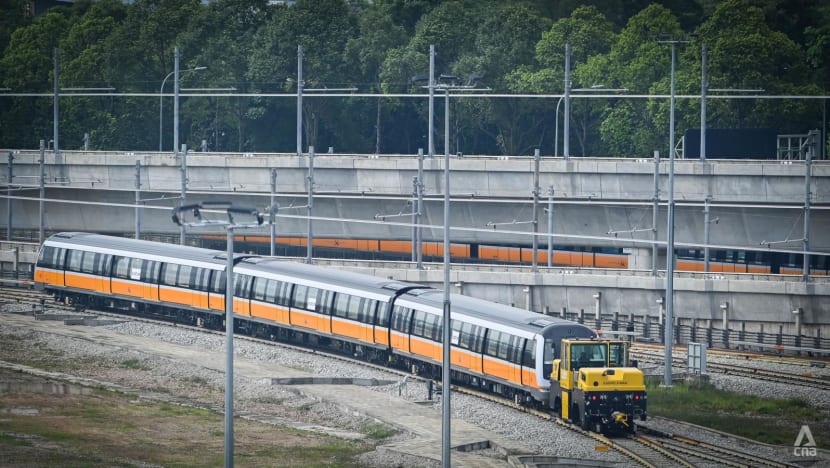
RESEARCH AND TRAINING
Beyond supporting testing and maintenance, there are also aspirations for SRTC to play a strategic role in developing Singapore’s rail expertise, she said.
Unlike many overseas test facilities, which are owned by private train manufacturers for proprietary use, the SRTC is also a national test centre.
“This means that it was designed to be able to accommodate different rail systems from multiple manufacturers, supporting all MRT lines across Singapore – both existing and future,” Dr Khor said.
The centre can be used to deepen the capabilities of Singapore's rail workforce, with the facility serving as a training ground for rail engineers and operators, providing hands-on experience with real-world scenarios.
The test centre also provides a platform for research and development for leading original equipment manufacturers (OEMs) and industry partners.
They can use the facilities to test and pilot new technologies and systems, and this helps to “anchor more expertise in Singapore”, she added.
The SRTC also has the potential to serve as a regional centre for rail testing.
While the needs of the local rail network will be prioritised, the SRTC could potentially provide specialised testing services to regional operators, fostering “greater collaboration and knowledge exchange between our local rail engineers as well as their regional counterparts”.
“This too can help us to improve our local capabilities,” said Dr Khor.
















